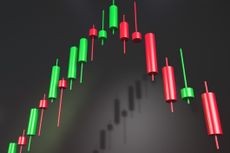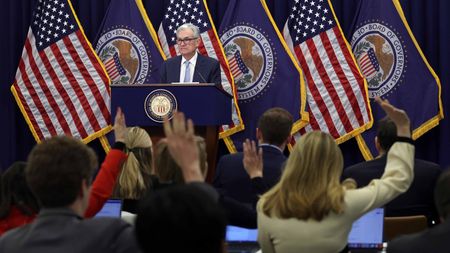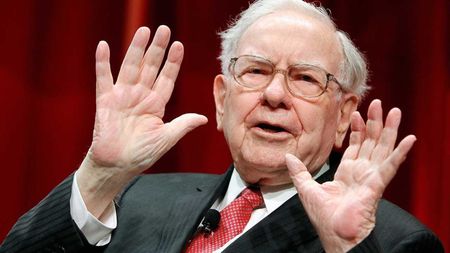American Apparel: Don't Discount the Skeeze Factor
This maker of trendy teen clothes has surging sales and cheap shares, but its dubious financial statements and unorthodox CEO should make you be wary of the stock.
At a glance, American Apparel seems like a great business story and an even greater investing story.
This scrappy apparel chain makes its clothing in a Los Angeles warehouse, pays its workers a decent wage and offers them subsidized health care. American Apparel operates nearly 200 stores around the world, selling tight and tapered clothes in bright colors to teens and young adults. It just opened a store in Shanghai -- take that, trade deficit!
The numbers look terrific. The company rang up sales of $111 million in the first quarter, up 51% from the same period in 2007. Analysts on average expect American Apparel to earn 35 cents a share this year. Last year, the company earned 31 cents a share, but the figure would have been 19 cents without a deferred tax benefit. At its May 20 close of $7.11, the stock (symbol APP) sells at 20 times 2008 earnings estimates, an apparent bargain considering the company's rapid growth.

Sign up for Kiplinger’s Free E-Newsletters
Profit and prosper with the best of expert advice on investing, taxes, retirement, personal finance and more - straight to your e-mail.
Profit and prosper with the best of expert advice - straight to your e-mail.
Those young people who make up American Apparel's target have a word that neatly sums up why the shares look so cheap: skeezy. Urbandictionary.com defines skeezy as a combination of sketchy (dubious) and sleazy (dirty or vulgar).
Skeezy might also describe American Apparel's chief executive officer, Dov Charney. The Wall Street Journal reported in April that Charney "stages provocative photo shoots in the basement of his Los Angeles mansion -- a hilltop perch filled with stacks of his vintage porn magazines." Unrelated to his predilection for porn, he has been the target of four sexual harassment suits by former employees. Regarding the one lawsuit still pending, Charney told CNBC: "I don't see this as an ongoing risk for us."
The company' uses a "provocative marketing and branding" strategy to peddle its wares. A typical ad features a teenage girl in skimpy AA clothes and provocative poses. The pitches make the once-scandalous Abercrombie & Fitch ads look like a pitch for a petticoat in a Sears catalog, circa 1894.
There's no question that Charney is good at what he does. He was recently named Retailer of the Year at the 15th Annual Michael Awards for the Fashion Industry, the Oscars of fashion.
But because of American Apparel's penchant for skeezy financial statements, investors should approach the stock with extreme care. The company has had problems with creditors and has often had to restate its financials, in one case because it overstated its profits by 30% in 2005.
More recently, the company had to correct some things officials said during the company's May 13 conference call, including an assertion that its U.S. wholesale segment lost money in the fourth quarter of 2007. The unit actually made money. Potato, patahto.
The company has defended its restatements and disputed its problems with creditors (the point by point defense is too complicated to get into). Lazard Capital Markets analyst Todd Slater says the company's numbers "have been scrutinized and approved by independent auditors," as well as the Securities and Exchange Commission.
American Apparel became public last year through a rare method often used by firms that begin life as penny stocks: a "blank check" initial public offering. Basically, an investment company raises money but doesn't give investors a clue about for what it will be used. In this case, the company raised $130 million then bought a portion of American Apparel, which subsequently became a publicly traded company.
Despite all those red flags, American Apparel has its fans. Analyst Todd Slater dismisses the damning Wall Street Journal article as pointing out "growing pains" of a privately held company and its "unorthodox CEO."
And when the company missed first-quarter earnings estimates (analysts had predicted 5 cents a share, and the company made 2 cents), Slater said that results were clouded by one-time issues and that it was actually a strong quarter. "Retail sales increased 56% in the U.S., 70% in Canada and 84% in other international locations," wrote Slater, who has a $17 price target on the stock. "We are hard-pressed to find many other retailers operating at these levels of productivity growth."
I bet he'd also be hard-pressed to find many other retailers with such a checkered past. Sometimes the numbers don't tell the full story. In many such cases, it's often prudent to walk away, even if the company is growing wildly and the stock looks cheap.
Get Kiplinger Today newsletter — free
Profit and prosper with the best of Kiplinger's advice on investing, taxes, retirement, personal finance and much more. Delivered daily. Enter your email in the box and click Sign Me Up.

-
 Stock Market Today: Stocks Are Mixed Before Liberation Day
Stock Market Today: Stocks Are Mixed Before Liberation DayMarkets look forward to what comes with the reordering of 80-year-old global trade relationships.
By David Dittman Published
-
 Stagflation: What It Is and Why Retirees Should Care
Stagflation: What It Is and Why Retirees Should CareStagflation — the economic bogeyman of the 1970's — may return to the US. Here's what it could mean to your retirement.
By Donna Fuscaldo Published
-
 Fed Leaves Rates Unchanged: What the Experts Are Saying
Fed Leaves Rates Unchanged: What the Experts Are SayingFederal Reserve As widely expected, the Federal Open Market Committee took a 'wait-and-see' approach toward borrowing costs.
By Dan Burrows Published
-
 Fed Sees Fewer Rate Cuts in 2025: What the Experts Are Saying
Fed Sees Fewer Rate Cuts in 2025: What the Experts Are SayingFederal Reserve The Federal Reserve cut interest rates as expected, but the future path of borrowing costs became more opaque.
By Dan Burrows Published
-
 Why Is Warren Buffett Selling So Much Stock?
Why Is Warren Buffett Selling So Much Stock?Berkshire Hathaway is dumping equities, hoarding cash and making market participants nervous.
By Dan Burrows Published
-
 Fed Cuts Rates Again: What the Experts Are Saying
Fed Cuts Rates Again: What the Experts Are SayingFederal Reserve The central bank continued to ease, but a new administration in Washington clouds the outlook for future policy moves.
By Dan Burrows Published
-
 If You'd Put $1,000 Into Google Stock 20 Years Ago, Here's What You'd Have Today
If You'd Put $1,000 Into Google Stock 20 Years Ago, Here's What You'd Have TodayGoogle parent Alphabet has been a market-beating machine for ages.
By Dan Burrows Last updated
-
 Fed Goes Big With First Rate Cut: What the Experts Are Saying
Fed Goes Big With First Rate Cut: What the Experts Are SayingFederal Reserve A slowing labor market prompted the Fed to start with a jumbo-sized reduction to borrowing costs.
By Dan Burrows Published
-
 Stock Market Today: Stocks Retreat Ahead of Nvidia Earnings
Stock Market Today: Stocks Retreat Ahead of Nvidia EarningsMarkets lost ground on light volume Wednesday as traders keyed on AI bellwether Nvidia earnings after the close.
By Dan Burrows Published
-
 Stock Market Today: Stocks Edge Higher With Nvidia Earnings in Focus
Stock Market Today: Stocks Edge Higher With Nvidia Earnings in FocusNvidia stock gained ground ahead of tomorrow's after-the-close earnings event, while Super Micro Computer got hit by a short seller report.
By Karee Venema Published
